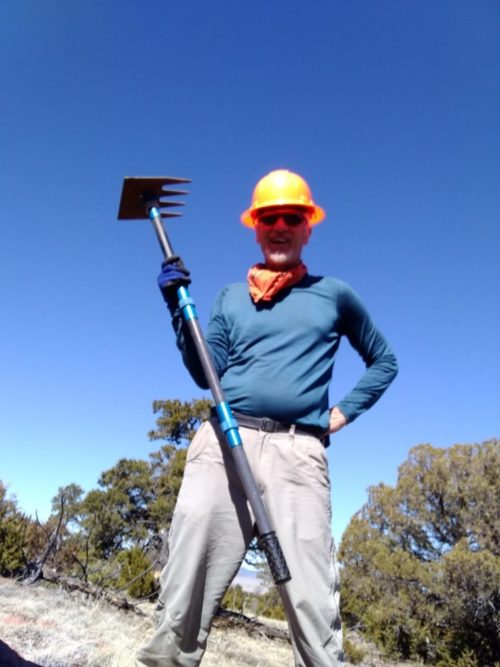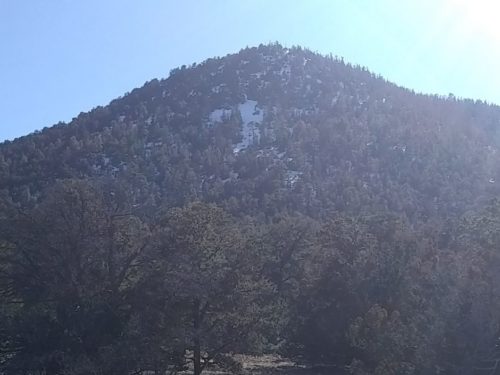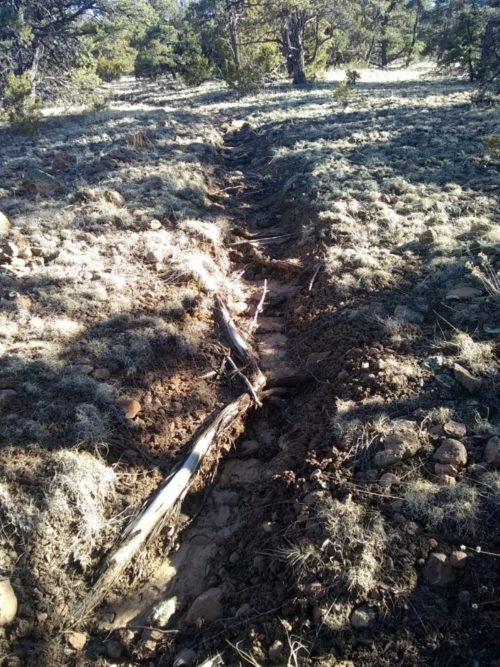As a CDT trail adopter, I need to work on my section at least twice a year. My long hike starts in a few days, and I really wanted to work on my adopted trail before the CDT north-bounders arrived, so I risked cold weather for an early work session. I parked at the northern terminus of the segment near a marked trailhead near Surprise Tank, which Google Maps knows about and helped me navigate. (The “Surprise” is the distinct lack of a tank at this location.) A high-clearance motor vehicle is needed to get here, but not 4WD.
I worked on tread, cleaning out natural drains and built a few drains on old water bars, and created a few dips and small rolling dips. Some grass on the pathway was scraped away where the trail direction was hard to see, and more of this work needs to be done in open areas where a tree corridor does not signal the location of the trail. Two fallen trees needed to be removed from the pathway, but the corridor was mostly clear and well-defined from my previous work.

Snow looked like it might still cover the trail on the heights, but just missed the path by a few feet.

On the northern portion of my segment, the trail goes straight up and down slope in several places, leading to water erosion and ditching of the trail, with the tread being lower than ground level on both sides, creating a channel for water flow. This is the problem to fix on my next visit.

I cleaned out over 55 drains, but only got 3 miles south before camping for a cold night. This was my first solo work session with a McLeod, a cross between a wide hoe and a rake used for trail tread work. Usually I am using this tool while working with a large group, and tend to imitate what the more experienced trail crew are doing. Doing solo work, I have to think a lot more about trail design and water flow and engineering.